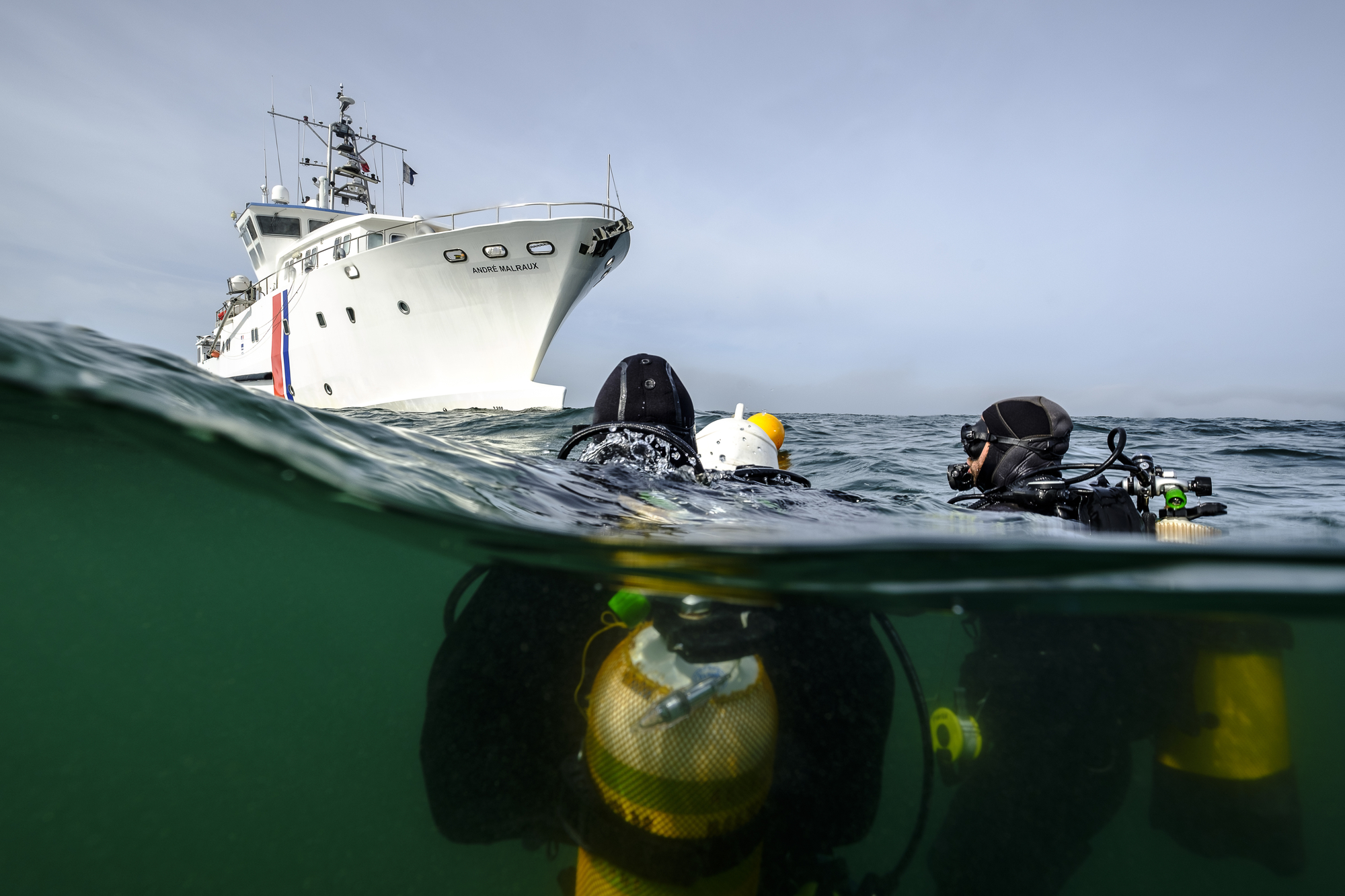
- Home
- A systematic inventory (2015-2019)
- An exceptional corpus
The completion of an exhaustive inventory of D-Day maritime remains has demonstrated the unique character of this corpus and highlighted the important naval dimension of Operation Neptune.
A vast field of underwater remains
The initial identifications made by Caen Plongée, largely completed by the survey campaigns conducted by American, British, Canadian and French archaeologists and hydrographers, now allow us to confirm the presence in the Baie de Seine of some 150 underwater sites that bear witness to the Normandy landings. This colossal project was an indispensable precursor to assessments of the patrimonial significance of these remains.
Given their number and diversity, the sites in the corpus form a coherent ensemble that is a unique testament to this major historical event. On a global scale, rarely have such events been so well represented by their underwater remains. At the British naval base in Scapa Flow (Orkney Islands), only 7 of the 74 vessels scuttled by the Germans in 1919 remain, following salvage and re-floating operations. The seabed of the Japanese naval base at Truk Lagoon, in Micronesia, is home to 15 warship wrecks, 32 merchant ship wrecks and the remains of numerous aircraft shot down by the US Navy on 17 February 1944 during Operation Hailstone.
Raising awareness of the naval dimension of the Normandy landings
The archaeological inventory of the maritime remains of the Normandy landings illustrates the importance of the naval component of this event, whose air and land operations have been more frequently studied. It also demonstrates the diverse typology of the means deployed by the Allies.
The preserved corpus represents only a fraction of the Allied units mobilised. For example, while there are 16 warships and 57 transport and commercial ships remaining, just the first wave of the landings included 1,200 conventional battleships and 5,700 transport units. Nevertheless, this corpus, with 22% warships (17% according to the figures given for the first wave) versus 78% transport and landing craft (83%), clearly reflect the logistical nature of this operation.
Although the Allied air force played a decisive role in Operation Overlord, no aircraft wreckage linked to the D-Day landings has been discovered in the Baie de Seine. This can be partly explained by the fact that German pilots prioritised attacks in the northern Baie de Seine to avoid facing heavy naval artillery. Moreover, aircraft remains, being smaller and lighter than large ships, are much less likely to be preserved, discovered or reported.


